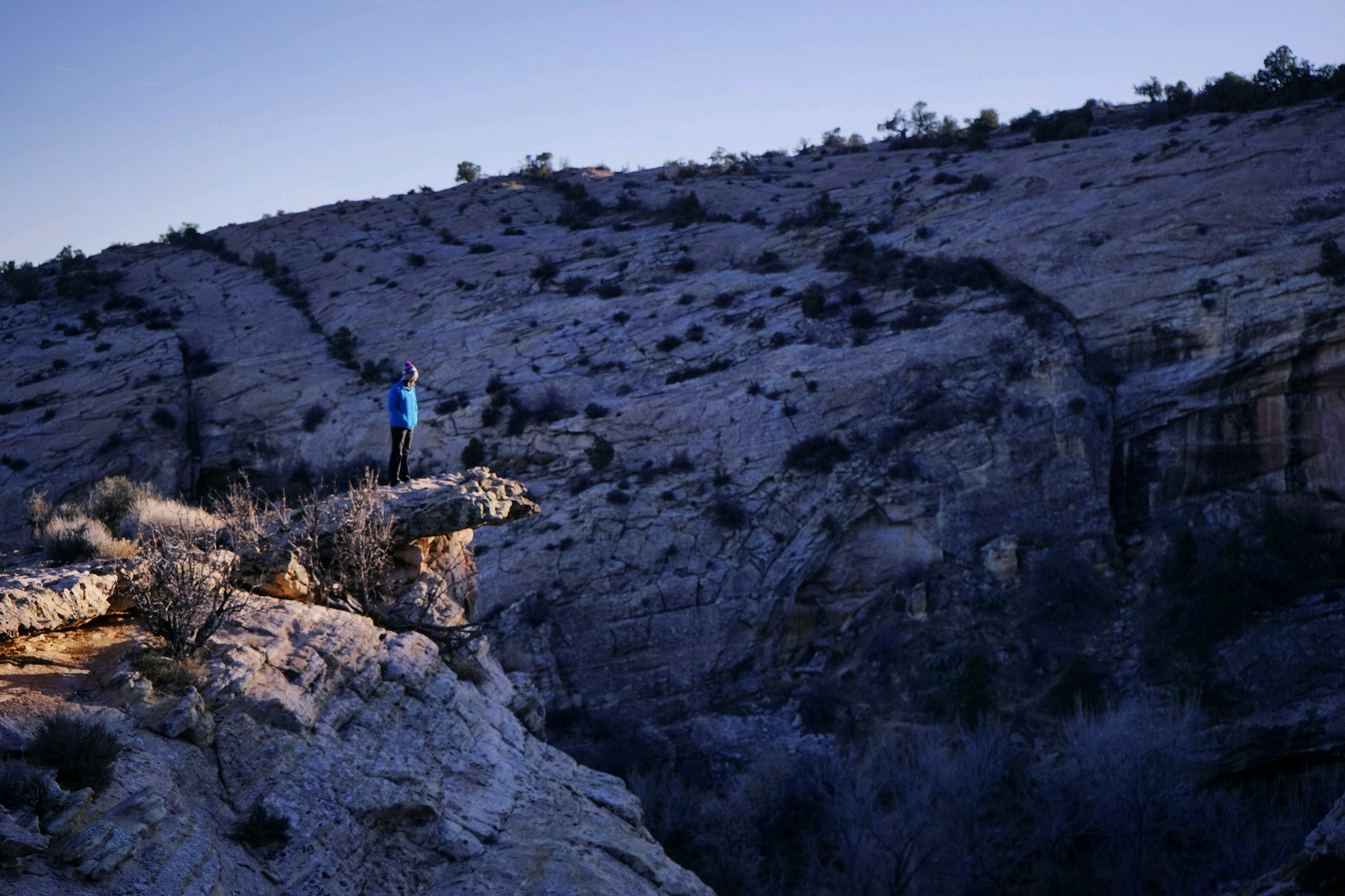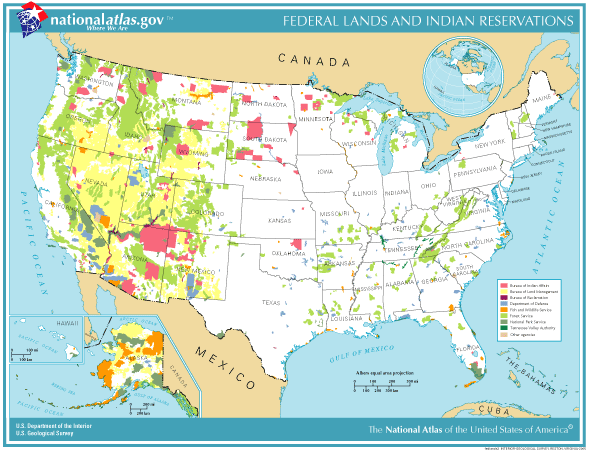When I was growing up, I never really gave much thought to who owned land or what the implications of that ownership might be. In Wisconsin, only 5.1% of the state’s land is owned by the U.S. government, making nearly all of it owned by private parties. Public lands weren’t ever a topic of discussion, mostly because they didn’t really exist anywhere nearby.
I spent my childhood camping in state parks and walking on trails maintained by public trusts or nature preserves. My family got outside and hiked fairly often, but I never really experienced the feeling of knowing I could walk for miles or days and never hit a “no trespassing” sign. In a way, nature felt boxed in, meted out in small doses for daily excursions.

The limits of nature got even smaller when I moved to Chicago, and aside from a narrow strip of green land that lined Lake Michigan, there wasn’t even a direction I could look in without staring down yet another block of apartments buildings.
At that point, I still thought of myself as a city person. I’d left my small town at 18 to attend college in Minneapolis and had lived in large cities ever since. I commuted on public transit and spent my days walking on crowded sidewalks. I didn’t own a car. Whenever I looked out the window, I saw more windows, belonging to other apartments and office buildings.
Eventually, an underlying sense of unease made me question what was missing from my urban lifestyle. I had vague notions of feeling trapped in the city. The constant noise began to wear on me, the train I took to work started to feel extra crowded, and the little park near my house simply wasn’t enough to fill the growing yearning for green space.

For reasons completely unrelated to the outdoors, I eventually accepted a job in rural Vermont. I had no idea what I was getting myself into. I cried the day I moved into my apartment, asking myself what the hell I was doing in a tiny town in the middle of nowhere on the other side of the country.
As it turned out, moving to the Green Mountain State was just what I needed.
I reconnected with the land almost immediately. I paddled down rivers in the sunshine with new friends and watched wide-eyed as great blue herons sailed right over our heads. I spent time pulling weeds at an acquaintance’s farm, feeling utterly accomplished when I returned home with a bag full of produce and black dirt under my nails. I swam in ice cold rivers on my lunch break and bumped down unmarked dirt roads that I eventually learned to navigate on my own, without a map.

Life suddenly felt smaller and more manageable in my little New England town. Opportunities seemed to fall from the sky, and I tried out things I’d never imaged before: cross country skiing, hoop dancing, trail running, and rock climbing. I started seeking out trails on my own, trained for longer runs, and embraced being outside. I started to appreciate my body more, using it as a tool to gather new experiences in the outdoors. The ever-present green mountains breathed life into me in a way I didn’t even know I’d been missing.
Eventually, circumstances conspired for me to consider moving out west. I had barely spent any time west of the Mississippi, but I figured if I could make a home in Vermont, I could probably do it somewhere else, too. I first set foot in Utah for a job interview, and six weeks later, I returned as its newest resident.

Before I left Vermont, a co-worker confided in me that he’d once lived in Wyoming and that he was envious of my move. “The West is best,” I remember him telling me, and while I liked the ring to it, I wasn’t sure exactly what he meant.
What I discovered was a region with countless wild places, many that I never even knew existed. (True story: I didn’t even realize that Utah was half desert until after I’d already moved here.) There were national forest lands steps from my apartment, jagged red rock canyons that slice through the earth for hundreds of miles, and peaks so tall that trees don’t grow on the top. I had so much to learn about my new home.

As I began to explore the landscape around me, I also learned about land designations. Approximately 65% of the land in Utah is owned by the federal government, and this public land goes by many names. There are national parks, national forests, BLM land, national monuments, wilderness areas, and national recreation areas. All of these lands are public, but the designation determines what one is allowed to do within their boundaries.

In the course of my research, I discovered the term “dispersed camping”, which is allowed on most BLM and Forest Service land. I’d grown up camping in campgrounds, and I thought that’s how camping worked. You selected a site, paid for it, and hoped the people in the spot next to yours weren’t too loud. The idea that I could drive down a dirt road and call it home for the night – for free – was incredible.

In my twenties, I traveled internationally so much I had extra pages added to my passport. So far in my thirties, I haven’t stepped foot outside of North America. Not that there aren’t a lifetime of places to explore abroad, but there’s still so much to see here I can’t tear myself away.
My mom once told me a friend of hers said that she had no interest in traveling abroad until she’d seen all the wonders of the United States. At the time, I thought that was crazy talk. But in a way, I now understand where she’s coming from. I am not the same person now that I’ve seen fog dissipate off the jagged peaks of the Tetons, watched furry marmots scurry around alpine meadows, and stood before ancient dwellings that have remained staunchly in place for over 800 years.

With so much of Utah’s land being public, I’ve recreated nearly exclusively on land that is owned by us, the American people. I feel lucky to be able to use this land, to be a steward of our country’s landscapes and heritage.
I don’t know how many days and nights I’ve spent hiking, camping, running, and climbing since moving to Utah, but these public lands have changed me. They’ve turned me from a city girl into a trail walker, a solitude seeker, a mountain climber, and an amateur naturalist. I’m stronger both physically and mentally. I worry less, breathe more deeply, and feel less stressed overall.

Maybe I was never really a city girl, and coming to Utah was a return to who I really am. Either way, public lands have played a critical role in nearly every lesson I’ve learned and memory I’ve made since moving out west. Recent political acts, like Trump’s decision to shrink two of Utah’s national monuments, have felt like a personal blow to me, impacting the lands I’ve come to know and love.
If you haven’t been out west, plan a trip! Visit these places and I guarantee you’ll understand why so many of us love these lands so deeply. They belong to us, they move us, and they change us in ways we often can’t fully express in words. Public lands are our lands, and I hope you’ll join me in the fight to keep them for everyone, for now and into the future.

Here are some ways you can take action:
Donate to the Bears Ears Inter-Tribal Coalition, a group that represents five tribes in the region who advocate for Bears Ears.
Contribute to the Bears Ears Education Center that the Friends of Cedar Mesa are building. When the government won’t protect what’s important, it’s up to us to do it ourselves. (This campaign ends on December 31, 2017.)
Learn about the different groups that are working to save Bears Ears and Grand Staircase-Escalante National Monuments.
Watch this report on Bears Ears by AJ+ Docs.
Contact your representatives and tell them you support keeping the monuments as they are. On social media, reach out using #SaveGrandStaircase and #StandwithBearsEars.
Give to The Access Fund, a climbing advocacy organization. Some of the world’s greatest rock climbing areas sit inside Bears Ears National Monument and would be impacted by oil and mineral extraction if the monument is reduced.
Support companies that are fighting for our public lands, like REI and Patagonia.
Finally, get outside. It’ll calm your mind, focus your attention, and make you healthier. For real.


YES to all of this. Thank you for writing!
LikeLike